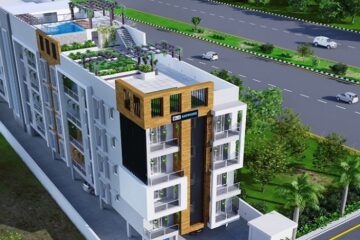How to Choose the Ideal Size for Dental Treatment Rooms

Image Source: Divo Interiors UK
In the ever-evolving landscape of dental care, the physical layout of treatment rooms plays a crucial role in the overall efficiency and patient satisfaction of a practice. As dental professionals seek to enhance their services and patient experience, the consideration of room size and shape becomes paramount. This is especially true when undergoing a dental surgery refurbishment or integrating new dental surgery cabinets. An optimal layout not only caters to the functional demands of dental procedures but also addresses patient comfort and privacy. In this comprehensive guide, we’ll explore the various aspects of designing the ideal dental treatment room, ensuring your practice can meet and exceed modern expectations.
Understanding Different Treatment Room Layouts
When embarking on the journey of planning or refurbishing a dental clinic, understanding the nuances of different treatment room layouts is crucial. Each type of room, whether it’s an open plan, single entry, or double entry, offers distinct advantages and challenges that can significantly impact the functionality and patient experience within your practice.
Open Plan Layouts are characterised by their spaciousness, allowing for multiple patient chairs within a single, large area. This layout is particularly advantageous for clinics specialising in orthodontics, where an open environment can facilitate easier supervision and interaction between patients and dental professionals. However, the major drawback of this setup is the lack of privacy, making it less suitable for procedures requiring confidentiality.
Single-entry rooms provide a higher degree of privacy, as each treatment area is separated by walls with a single door for entry and exit. This layout is ideal for smaller clinics or those aiming to offer a more personalised and confidential treatment experience. Single-entry rooms can, however, limit the flow of staff movement, potentially leading to inefficiencies if not well managed.
Double-entry Rooms are designed to optimise both privacy and operational efficiency. These rooms have two doors, allowing dental staff to enter and exit from either side. This feature can significantly enhance the workflow, making it easier to maintain a sterile environment and reduce patient wait times. The increased privacy and accessibility make double-entry rooms a favoured option for many practices.
Choosing the right layout for your dental clinic involves careful consideration of:
Privacy Needs: Single and double-entry rooms offer more privacy than open plans.
Operational Efficiency: Double-entry rooms can improve staff workflow and patient turnover.
Space Utilisation: Open plans may be more cost-effective for larger practices, while single and double-entry rooms require more thoughtful space planning.
Patient Experience: Ensuring a comfortable and confidential environment is paramount, regardless of layout choice.
Selecting the appropriate treatment room layout is a foundational decision in creating a dental clinic that meets the needs of both patients and staff efficiently and effectively.

Image Source: Divo Interiors UK
Open Plan
The open plan layout in dental clinics represents a modern and collaborative approach to dental care, primarily suited for orthodontic practices. By arranging multiple patient examination chairs within a single expansive area, this design fosters an environment where open communication and patient observation are seamlessly integrated into the daily workflow. The cost-effectiveness of this layout is one of its most appealing attributes, allowing for a more efficient use of space and resources. It enables a dynamic setting where multiple patients can be seen simultaneously, facilitating a higher volume of appointments and encouraging a sense of community among patients.
Despite its advantages in fostering interaction and reducing overhead costs, the open plan layout’s primary drawback lies in its inherent lack of privacy. In dental care settings where confidentiality and patient comfort are paramount, this design might not meet all patients’ expectations. Particularly for those undergoing more sensitive or complex procedures, the absence of secluded treatment spaces can be a significant concern, potentially impacting the patient’s sense of security and overall satisfaction with their care experience.
Comparing Single and Double-Entry Dental Rooms
When designing a dental clinic, the choice between single and double-entry treatment rooms significantly impacts the functionality and patient experience of the practice. Single entry rooms offer a high degree of privacy and are particularly suitable for smaller practices, while double entry rooms enhance operational efficiency by facilitating smoother patient and staff flow. Below is a detailed comparison of these two layouts, highlighting their key features and advantages.
| Feature | Single Entry Rooms | Double Entry Rooms |
| Privacy | Offers unparalleled privacy with individual doors for each room. | Maintains privacy while allowing access from both sides, enhancing patient comfort. |
| Space Efficiency | Optimal for smaller practices, maximising use of limited space. | Requires more space but provides efficient flow for patients and staff. |
| Customisable Storage | Modular dental surgery cabinets can be tailored to room needs, keeping tools within reach. | Similar flexibility in storage solutions, ensuring operational efficiency. |
| Staff Movement | Reduces the need for staff to leave during procedures, maintaining a sterile environment. | Facilitates smoother staff and patient flow with entries on both sides, potentially reducing wait times. |
| Patient Experience | The secluded environment enhances patient comfort and experience, ideal for sensitive procedures. | Allows for a more dynamic patient interaction, potentially improving the overall experience. |
Key Factors in Determining Room Size
Determining the optimal size for a dental treatment room requires careful consideration of multiple factors that directly impact functionality and patient comfort. The demographics served by the clinic, such as children, adults, or a mix, significantly influence room size requirements due to varying needs for space and equipment. The volume of operations performed also dictates the necessary room dimensions to accommodate different procedures efficiently. Additionally, the specific needs of the practice, including the types of services offered, must be taken into account to ensure the space is tailored to the practitioners’ and patients’ requirements.
Key considerations include
Demographic Needs: Tailor room size to the patient population served.
Operational Volume: Accommodate the number and types of procedures performed.
Practice Specialisation: Design spaces that reflect the services offered.
Cabinet Integration: Optimise room layout with strategically placed dental surgery cabinets for maximum efficiency and space utilisation.
Flexibility and Growth: Consider future expansions or changes in services, allowing for adaptability in room size and function.
Planning Dental Furniture & Equipment for Integration
Successful dental clinic design hinges on the strategic integration of furniture and equipment to foster a streamlined workflow and maintain an organised workspace. Here are key points to consider:
Streamlined Workflow: Design the layout to ensure a smooth operational flow, enhancing both efficiency and patient experience.
Modular Systems: Utilise modular furniture and equipment for their adaptability, enabling quick reconfiguration to meet evolving practice needs or to improve workflow.
High-Quality Dental Surgery Cabinets: Invest in durable and well-designed cabinets to secure and organise tools and materials, reducing clutter and minimising time spent searching for necessary items.
Ergonomic Considerations: Choose furniture and equipment that support ergonomic work practices, protecting the health and wellbeing of the dental team.
Accessibility: Ensure that essential tools and equipment are easily accessible from the patient treatment area, minimising movement and disruption during procedures.
Aesthetics and Functionality: Select pieces that not only serve their intended purpose but also contribute to the overall aesthetics of the clinic, creating a welcoming environment for patients.
Future Growth: Plan for future growth by choosing furniture and equipment that can easily be expanded or upgraded as the practice grows and technology advances.

Image Source: Divo Interiors UK
Emphasising Patient Comfort and Privacy
Above all, the design of dental treatment rooms should prioritise patient comfort and privacy. This means creating a welcoming atmosphere, from the waiting area to the treatment room itself. Incorporating elements such as comfortable seating, calming colors, and appropriate lighting can make a significant difference in patient perception and satisfaction.
Conclusion
Designing the ideal dental treatment room involves a careful balance of functional efficiency, patient comfort, and aesthetic appeal. As dental practices continue to evolve, the importance of a well-thought-out physical layout cannot be overstated. Whether undertaking a dental surgery refurbishment or updating dental surgery cabinets, it’s essential to consider the unique needs of your practice and your patients. Divo Interiors LTD specialises in creating bespoke dental clinic designs that reflect the latest industry standards and innovations. By choosing Divo Interiors LTD for your clinic’s design needs, you can ensure a space that not only meets the demands of modern dental care but also provides an inviting and effective space for both patient care and staff workflow.
Leave a reply
You must be logged in to post a comment.










